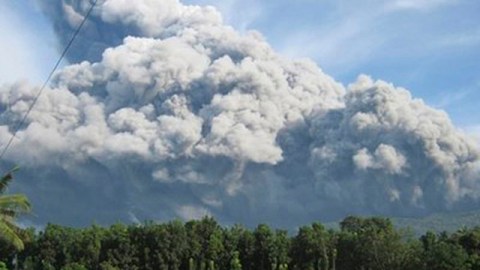Restless Bulusan continues to rumble

Look for the answer to MVP #31 later today, but for now, I have a brief update on Bulusan in the Philippines.
We ended 2010 with the restive volcano producing some small explosions of almost entirely old rock from the crater area. Now, this in itself wasn’t too hazardous except for people near the summit crater. However, the ash deposits on the slopes of Bulusan could easily be remobilized into lahars that did, indeed, come down the slopes of the volcano. The activity at Bulusan has been very off/on in its nature, with series of what appear to be phreatic (steam-driven) explosions for a few days followed by periods of relative quiet, although clouds have obscured the view of the summit for quite a bit of the last month.
However, it appears that Bulusan is back on the offensive, with a series of new explosions from the summit crater last night (local time). The explosions were heard rather than seen in the towns near the volcano, but PHIVOLCS has said that the explosions where “shallow and hydrothermal in nature“, again suggesting that these are steam-driven events caused by magma somewhere in the volcanic edifice heating up the rocks to temperatures that can cause the water percolating into the cracks between the rocks to turn to steam. The steam, of course, expands rapidly and causes the explosion, with the contemporaneous shattering of the old rock in the summit area to produce the ash plume/fall. Monbon, a town near Bulusan, did experience trace amounts of ash fall overnight, the only other direct evidence of the explosive events. PHILVOLCS is maintaining a 4-km exclusion zone around Bulusan as this activity continues, but the alert status remains at level 1.
Top left: Ash plume produced by minor explosions at Bulusan during November 2010.




